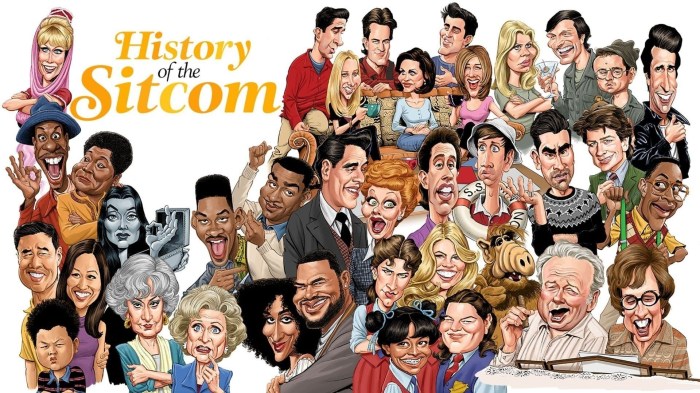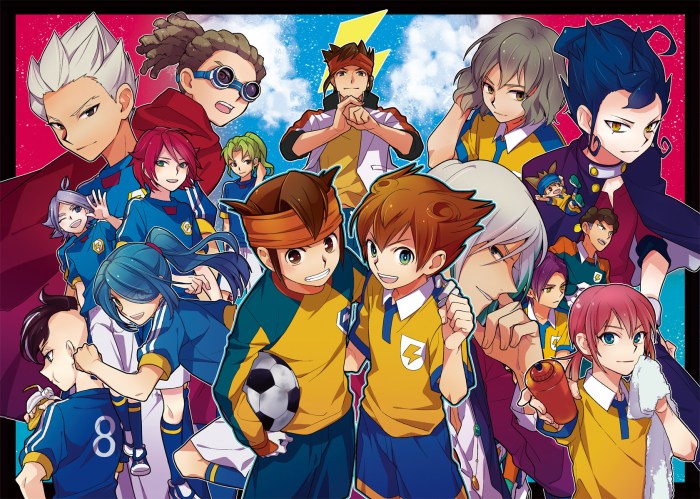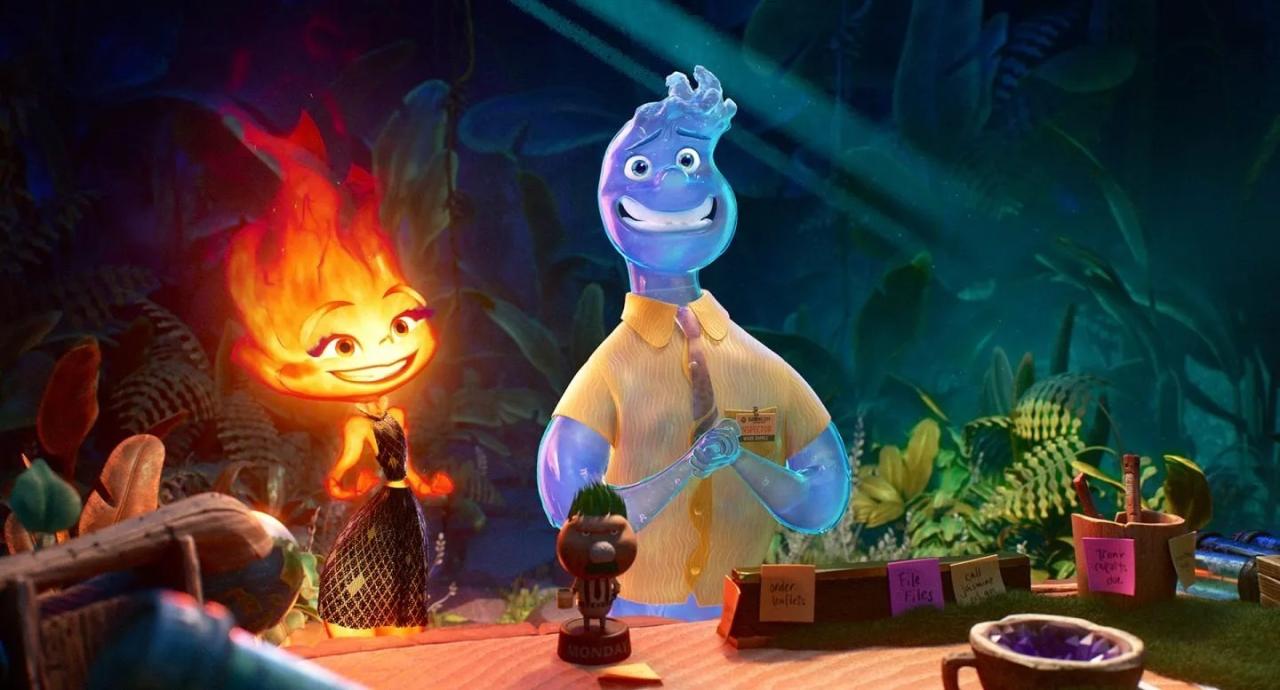Tv genre with opposing teams – Prepare yourself for a thrilling exploration of the captivating world of TV genres that pit opposing teams against each other. From fierce competitions to intricate conflicts, these shows captivate audiences with their dynamic interactions and relentless pursuit of victory.
As we delve into the realm of opposing teams on television, we’ll uncover the unique characteristics that define these genres, examine the captivating dynamics that unfold between the rivals, and explore the profound impact they have on the narrative structure and character development.
Defining TV Genres with Opposing Teams

TV genres with opposing teams are a type of television programming that features two or more teams competing against each other in a game or competition.
These genres are characterized by their focus on competition and rivalry, and they often feature high-stakes challenges and dramatic confrontations.
Key Characteristics
- Competition:The primary focus of these genres is on the competition between the opposing teams.
- Rivalry:The teams involved in these genres often have a strong rivalry, which adds to the excitement and drama of the competition.
- High-stakes challenges:The challenges faced by the teams in these genres are often high-stakes, with significant consequences for the outcome of the competition.
- Dramatic confrontations:These genres often feature dramatic confrontations between the teams, as they compete for victory.
Examples of TV Genres with Opposing Teams

In television, opposing teams can drive compelling narratives and create thrilling viewing experiences. From classic game shows to intense sports competitions, a wide range of TV genres showcase the dynamics and rivalries between competing individuals or groups.
Here is a table outlining some popular TV genres that feature opposing teams:
| Genre | Description | Examples |
|---|---|---|
| Game Shows | Contestants compete against each other in trivia, puzzles, or physical challenges for prizes. | Jeopardy!, The Price Is Right, Family Feud |
| Sports Competitions | Athletes or teams compete in various sports, such as football, basketball, or soccer. | The Super Bowl, March Madness, Wimbledon |
| Reality Competition | Contestants compete in challenges or tasks, with eliminations leading to a final winner. | Survivor, The Amazing Race, American Idol |
| Courtroom Dramas | Lawyers representing opposing sides present arguments and evidence in a courtroom setting. | Law & Order, The Good Wife, Suits |
Exploring the Dynamics of Opposing Teams

The interplay between opposing teams on TV shows often forms the backbone of the narrative, driving conflict, drama, and suspense. These teams, whether rival gangs, sports teams, or competing companies, exhibit unique dynamics that shape their interactions and influence the overall storyline.
One defining aspect of opposing teams is their inherent competition. Whether vying for supremacy, resources, or recognition, these teams are constantly pitted against each other, leading to intense rivalry and a drive to outmaneuver and defeat their opponents.
Conflict and Resolution
Conflict is a cornerstone of the dynamics between opposing teams. These teams clash over opposing goals, ideologies, or personal grudges, creating tension and fueling the narrative. The ways in which these conflicts are resolved reveal the character of the teams and the underlying themes of the show.
Resolving conflicts can take various forms, from direct confrontation and violence to negotiation and compromise. The choice of resolution often reflects the values and strategies of the opposing teams, as well as the broader context of the story.
Impact of Opposing Teams on Narrative Structure
The presence of opposing teams significantly influences the narrative structure of TV shows. These teams create inherent conflict, driving the plot forward and generating tension that keeps viewers engaged. Moreover, the dynamics between opposing teams shape character development, influencing their motivations, relationships, and growth throughout the narrative.
Conflicts Between Teams
Conflicts between opposing teams are a central element of many TV shows. These conflicts can take various forms, from physical confrontations to ideological differences or competitive rivalries. They provide a framework for the plot, propelling the characters and the story towards a resolution.
Shows with opposing teams, such as reality competitions and sports documentaries, keep us on the edge of our seats. But sometimes, we just want to relax with a fun and educational experience. That’s where the virtual fly lab answer key comes in.
This interactive online resource provides an engaging way to learn about science, and it’s perfect for all ages. And once you’re done with your science lesson, you can tune back into those thrilling competitions.
Character Development, Tv genre with opposing teams
The interactions between opposing teams also play a crucial role in character development. Characters may find themselves torn between loyalties or forced to make difficult choices that shape their moral compass and personal growth. The presence of rival teams can foster competition, collaboration, or alliances, influencing the characters’ relationships and motivations.
Characterization and Motivations
In TV genres featuring opposing teams, each individual member holds distinct character traits and motivations that shape the dynamics and conflicts between the teams.
These factors influence the team’s strategies, alliances, and ultimately, the overall narrative.
Individual Characterization
- Team members often possess contrasting personalities, skills, and backgrounds, creating a diverse and dynamic group.
- Characters may have specific strengths and weaknesses, such as leadership abilities, technical expertise, or personal flaws.
- Their individual perspectives and motivations drive their actions and interactions within the team.
Team Motivations
- Teams typically have overarching goals or missions that unite them, but individual members may have their own unique motivations.
- These motivations can include personal ambition, loyalty, revenge, or a desire for justice.
- Conflicting motivations can create tension within the team and lead to internal conflicts.
Visual Storytelling and Cinematography

The visual storytelling techniques employed in TV genres with opposing teams play a crucial role in conveying the rivalry and competition between them. These techniques enhance the sense of tension and excitement, immersing viewers in the drama unfolding on screen.
Camera angles, lighting, and editing are meticulously employed to create a dynamic and engaging viewing experience. Close-ups capture the intensity and determination in the eyes of the players, while wide shots showcase the strategic positioning and formations of the teams.
Camera Angles
- Low-angle shots from the perspective of the players make the opposing team appear more formidable and intimidating.
- High-angle shots from above create a sense of vulnerability and pressure on the team below.
- Tilted angles convey disorientation and chaos during intense moments of competition.
Lighting
- Bright, contrasting lighting emphasizes the physicality and athleticism of the players.
- Subtle, nuanced lighting creates an atmosphere of suspense and anticipation.
- Colored lighting, such as red or blue, can be used to represent the opposing teams and their rivalry.
Editing
- Fast-paced editing creates a sense of urgency and excitement.
- Slow-motion replays highlight key moments and emphasize the skill and athleticism of the players.
- Intercutting between different camera angles and perspectives enhances the sense of competition and rivalry.
Cultural and Societal Reflections
TV genres with opposing teams often reflect real-world dynamics and provide insights into human nature. They explore themes of competition, cooperation, and conflict, and can serve as a mirror to society’s own struggles and triumphs.
Exploring societal dynamics
These shows can explore societal issues such as prejudice, discrimination, and inequality. For example, the TV show “The Wire” depicts the struggles of police officers and drug dealers in Baltimore, highlighting the complex social and economic factors that contribute to crime and violence.
Insights into human nature
By pitting characters against each other, these shows can reveal the strengths and weaknesses of human nature. They can show how competition can bring out both the best and worst in people, and how cooperation can overcome even the most daunting challenges.
FAQ Summary: Tv Genre With Opposing Teams
What are the key characteristics of TV genres with opposing teams?
These genres feature rival teams or individuals who engage in competitions or conflicts that drive the narrative forward.
How do opposing teams influence the narrative structure of TV shows?
Conflicts between teams create tension, shape character development, and drive the plot forward.
What are some examples of popular TV shows that feature opposing teams?
Examples include reality competition shows like “Survivor” and “The Amazing Race,” sports dramas like “Friday Night Lights” and “Ted Lasso,” and legal dramas like “Law & Order” and “The Good Fight.”